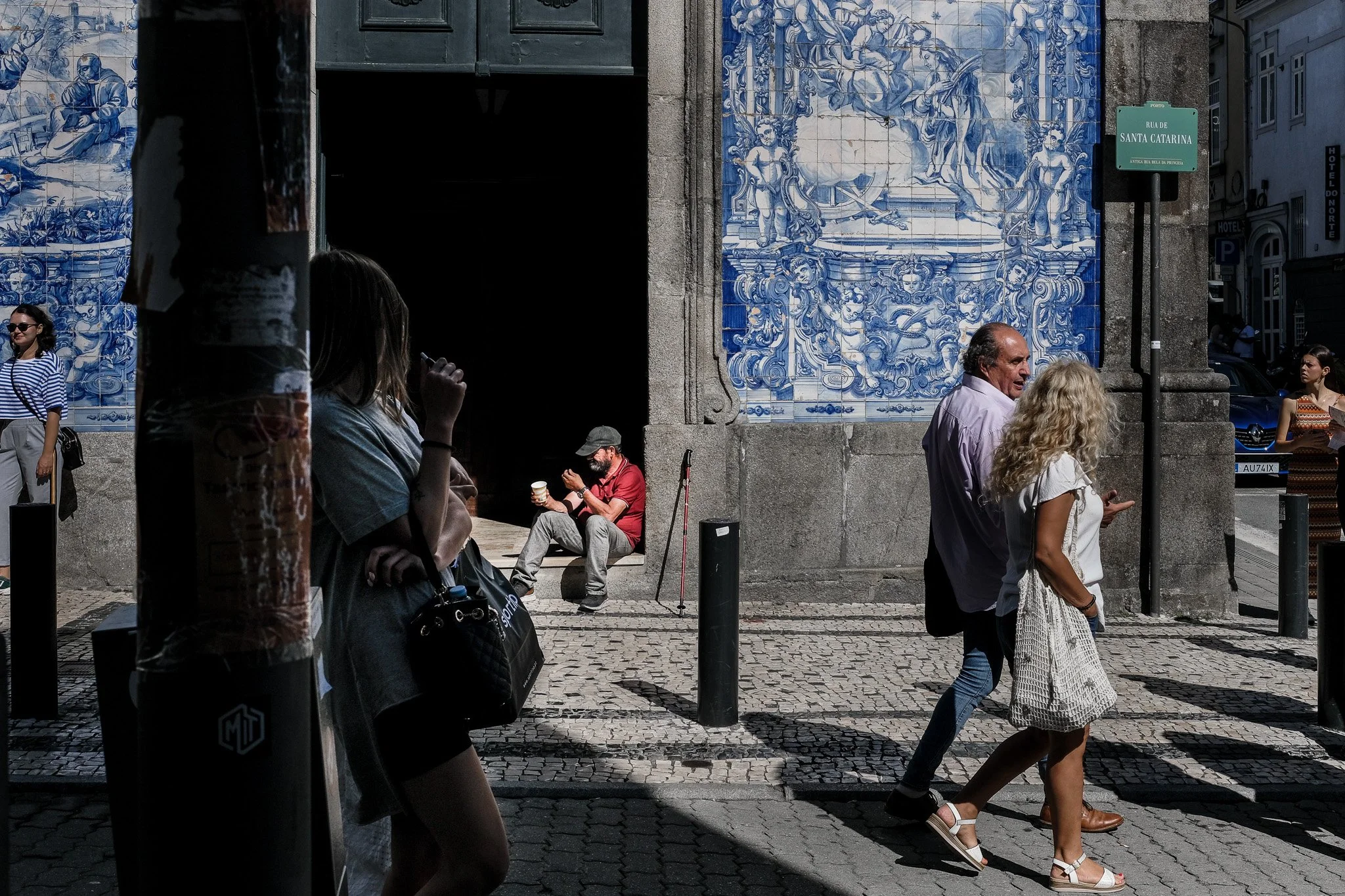Why Layering in Street Photography?
Layering is one of the most interesting, eye-catching and difficult to master concepts in street photography. Why? Physics and Neuroscience might have an answer.
Once you’re past the first steps of street photography, you’re no longer satisfied with capturing a single scene or person. Or maybe you just want to level up and add richer, more complex techniques. It’s very common to gravitate toward layering. But why? Why are we pulled toward this specific way of capturing the street? It feels like a puzzle: you’re handed multiple pieces and have to arrange them, make sense of them, and bring order to the chaos the street gives you.
“ Having multiple subjects, doing different things, placed at different distances, each in its own space satisfies our eye, but why?”
It won’t be true for everyone, but many of us—street photographers—are drawn to images where different people sit at different depths inside an ordered frame. Chaotic streets, rendered as a surprisingly harmonic picture. That shouldn’t surprise anyone who’s thought about how our brain works, and how physical systems work in general.
Physics tells us that any system can be in an ordered or a disordered state. A flock of sheep on a hillside, a colony of viruses, or water itself. Wildly different systems, but all describable by how ordered they are. They can be highly chaotic or highly ordered.
Here’s the twist: the most interesting things usually happen during the transition between order and disorder. In physics we call this the critical point—that sweet spot between chaos and absolute order. You’ve probably met it indirectly in phenomena like fractals and phase transitions.
So it’s not shocking that our brain—also a physical system—performs best when it’s operating near that edge. What does that mean in practice? How can a brain be “at the critical point”?
Measuring “how ordered” the brain is isn’t straightforward. Scientists have spent a long time on this. By mapping brain activity to well-known physical models, they can estimate how ordered the brain is at a given moment. The takeaway is simple: performance peaks when the brain sits closest to the critical point, right on the border between order and chaos.
Back to photography. It makes total sense that we’re visually attracted to systems close to that edge, because our brain itself performs best there. Our brain is drawn to systems that feel like us. It is empathic in some way, we aim for familiar systems, we look for what we intrinsically are.
We also seek information. That’s evolutionary. As a species we needed as much actionable information as possible to survive and make decisions in the wild. We still carry that bias. Given any situation, we’re most engaged when the information available is maximized.
And guess what? The critical point is precisely where information flow is highest. That’s why the brain hums there; it can process more than in any other state. That’s why a layered photo hits hard when it sits between order and chaos: the available information is peaking. Information is the hook. It’s what pulls us into complex, layered street photographs.
Layering isn’t about stacking bodies just to look clever. It’s about tuning a scene to that edge—enough order to read it, enough chaos to feel it. Foreground, mid-ground, background; light and shadow; rhythm and interruption. So when we are layering we are not just composing, we are trying to find the critical point, we are trying to explain the story with the most information possible.

